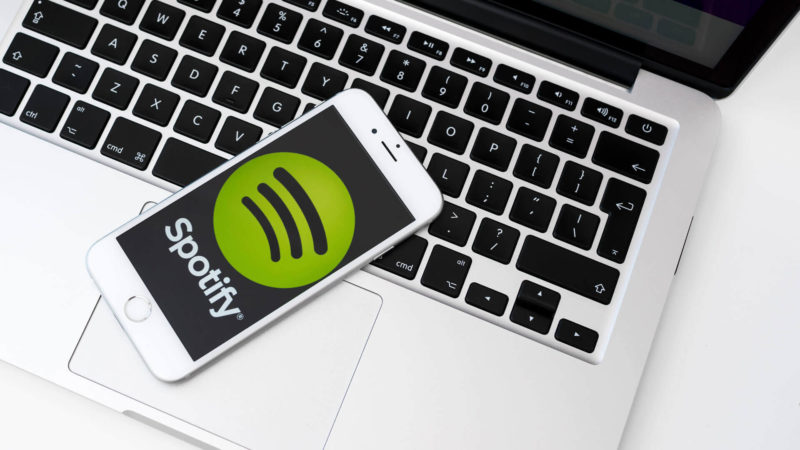User-generated content: What your brand can learn from Spotify
Columnist Jason Warnock explains how you can take a page from Spotify's powerful UGC-based campaigns and incorporate them into your brand’s marketing strategy.

A. Aleksandravicius / Shutterstock.com
You’ve decided to make user-generated content (UGC) a priority for your brand. But now you’re struggling to get your UGC campaign off the ground, and you’re starting to think that UGC is the unicorn of the B2B marketing world — an imaginary beast that is more myth than reality.
Maybe the problem is that you’re approaching UGC all wrong. Before you give up, sneak a peek at the way Spotify has achieved success with UGC and consider how you might incorporate some of its lessons into your brand’s marketing strategy.
How Spotify turns UGC into marketing success
User-generated content is a top priority for more than a third of marketers this year. Yes Lifecycle Marketing (my employer) research shows that while 38 percent of brands currently use UGC in their marketing strategies, another 38 percent are interested in adding it to the mix this calendar year.
But despite the renewed emphasis on user-generated content, Spotify is one of the only brands that has pulled off a memorable UGC campaign so far this year. As a follow-up to last year’s “Thanks, 2016. It’s been weird” campaign, the music streaming service rolled out a new campaign that takes a lighthearted look at the bizarre playlists created by users.
The new campaign features billboards and memes describing outrageous user playlists, as well as videos where artists comment on playlists that contain their songs. For example, in one campaign video, Alessia Cara ponders over “Global warming is real… let’s dance,” a user playlist that includes her song, “Wild Things.”
The Alessia Cara video rapidly devolves to costumed polar bears dancing on an iceberg, but the message is clear: Spotify is a user-driven service that allows subscribers to customize the listening experience.
By tapping into user-generated content, Spotify developed a campaign that communicates its core message to new and existing users in an engaging, memorable way. That’s the power of a successful UGC-based campaign — power that you can tap into for your brand.
Why Spotify’s UGC content campaigns work
Spotify’s UGC campaigns resonate with audiences. The ads are funny in a life-is-stranger-than-fiction kind of way, and subscribers can relate to the struggle of selecting descriptive names for their playlists.
But on a strategic level, Spotify’s campaigns work because they combine several textbook elements of effective UGC-based marketing:
- Tell a story across channels.
Spotify’s UGC-based campaigns focus on a story that can be told across channels. For example, the subscribers’ playlist titles are interesting enough that the brand doesn’t have to provide much context, which makes it easier to tell the story across multiple channels: billboards, direct mail, email, digital ads and more.
UGC often lends itself to simple storytelling. By focusing on the simplicity of the story (e.g., Spotify playlist titles), brands can seamlessly communicate in diverse channels and formats, increasing both the impact of campaigns and the return on investment — the two biggest goals for every marketer.
- Succeed on one channel, then expand.
Although Spotify’s campaigns are designed for distribution across multiple channels, the brand didn’t use all available channels right out of the gate. Instead, it focused on a single channel (billboards) and then gradually moved to other channels (retargeting ads, social media posts and so on) based on the campaign’s initial success.
With an endless supply of great content, it’s tempting to launch a full-scale multichannel campaign. But, that’s the equivalent of putting all your eggs in one basket. The decision to do everything at once can be disastrous for brands and marketers.
A gradual expansion strategy presents opportunities for an iterative approach with course corrections as new channels are added to the mix.
- Plan for the long haul.
Spotify’s UGC-based campaigns aren’t quick hits — they’re built to last. The playlist campaign first appeared around New Year’s Day, and four months later, it’s still going strong, with new playlist titles regularly appearing on various channels.
Since users constantly create new content, the best UGC-based campaigns are structured to run on an ongoing basis. Instead of fizzling out, the campaigns get better with age because the audience is familiar with the concept and eager to view the latest installment — and if they’re lucky, see their playlist title on a billboard in Times Square.
It’s tempting to view Spotify’s success as an anomaly — a one-off approach that could only happen in tandem with the streaming service’s unique business model.
In the B2B universe, in particular, brands routinely shy away from these types of campaigns because not all UGC tells a story that is as complete as Spotify playlist titles. Likewise, B2B marketers have concerns about customer privacy and are hesitant to bite off more than they can chew.
But the basic tenets of Spotify’s UGC-based campaigns apply to most brands across industries. By leveraging user content to tell a simple story, starting on a single channel and developing campaigns that are built for the long haul, all marketers can create and execute cost-effective UGC-based campaigns that deliver big results for their brands.
Opinions expressed in this article are those of the guest author and not necessarily MarTech. Staff authors are listed here.
Related stories
